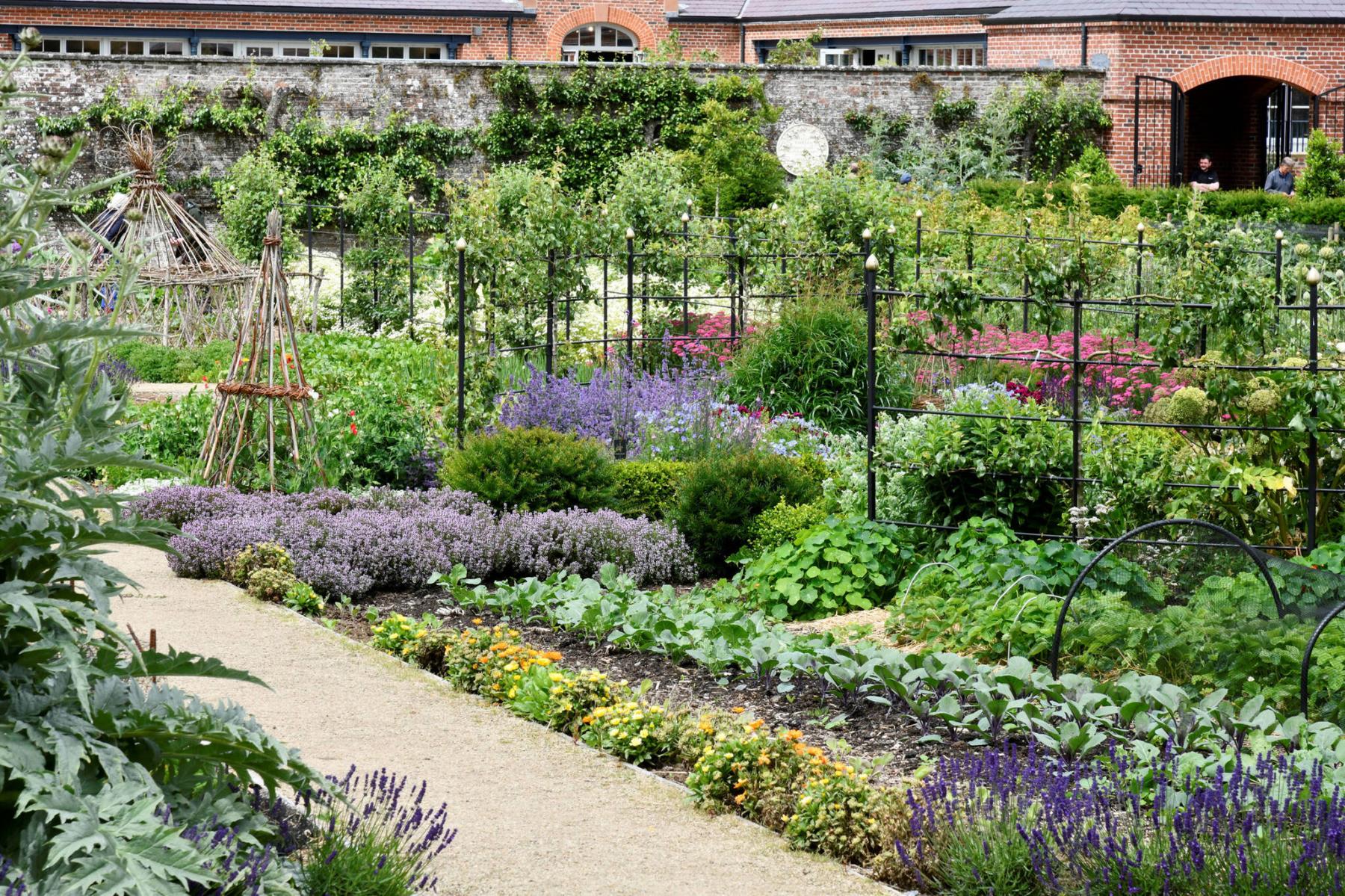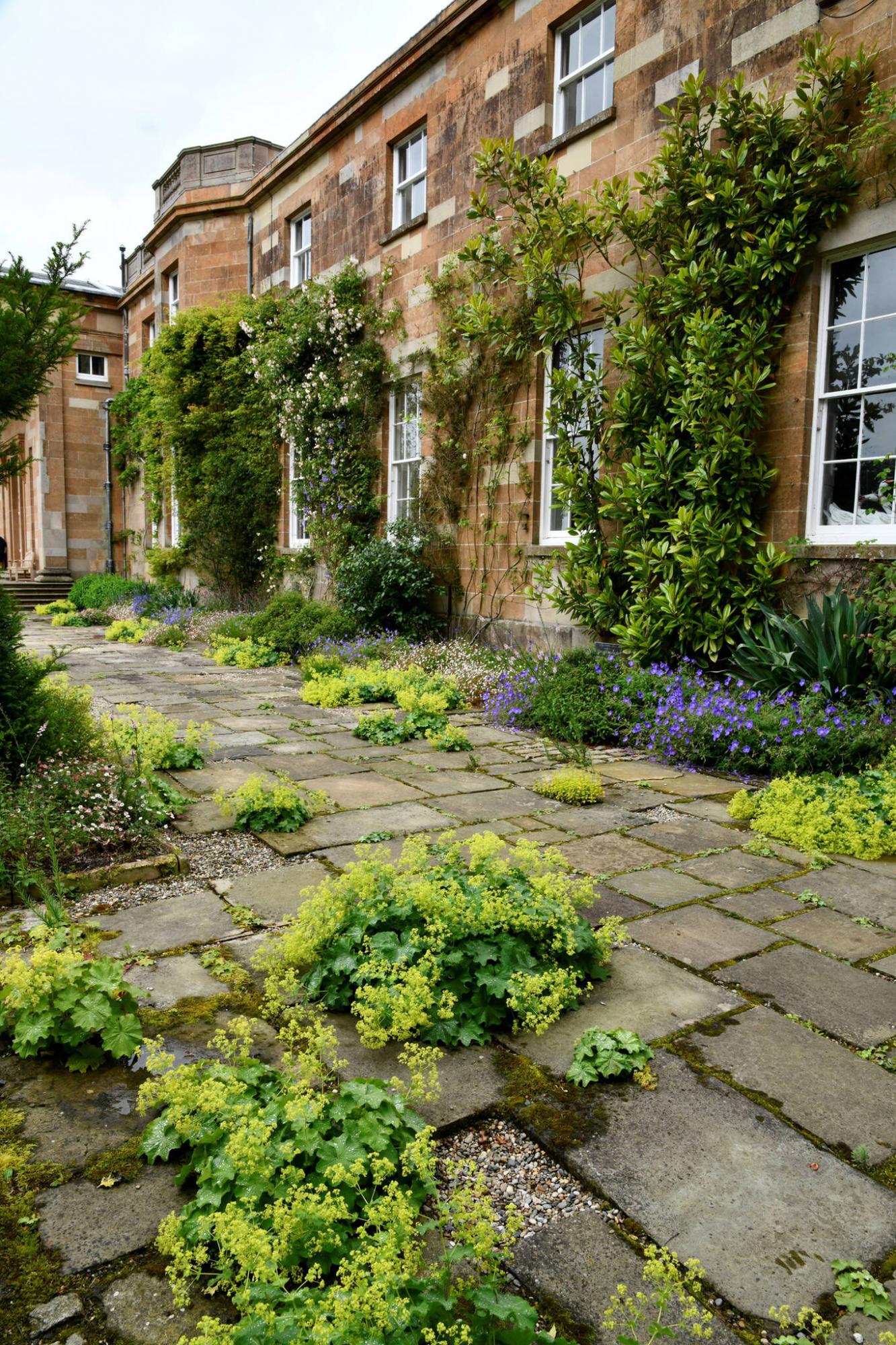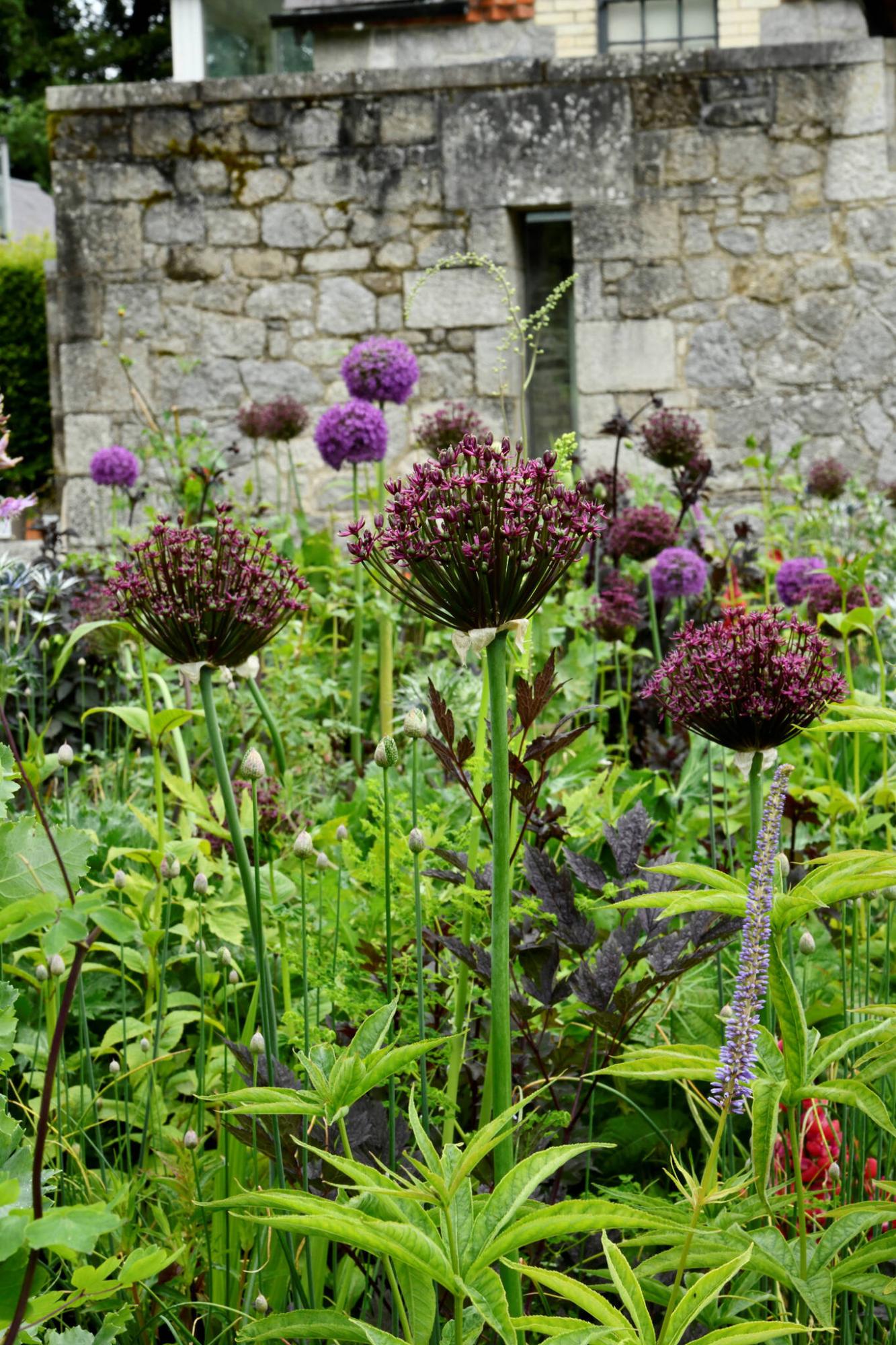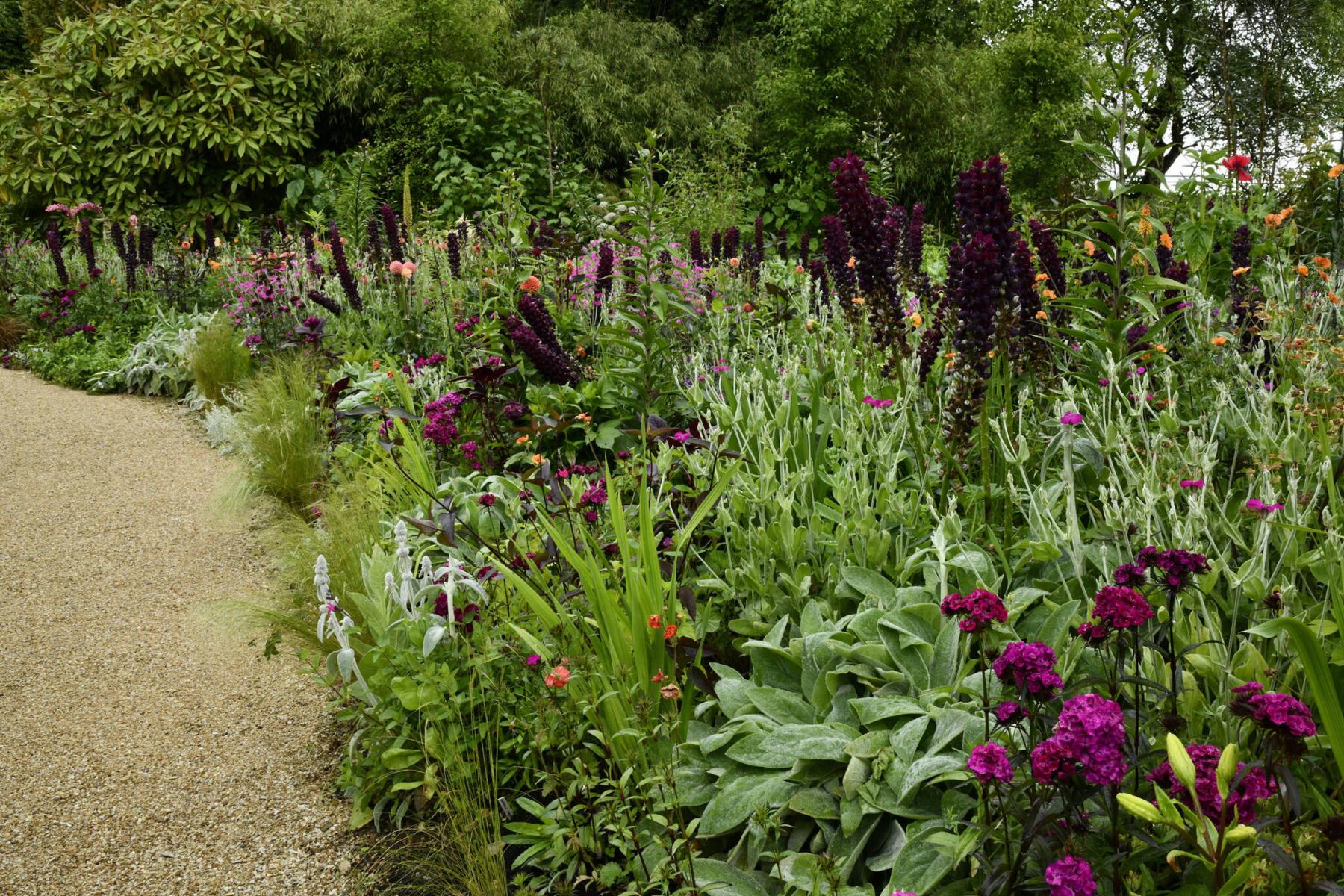


Gary Lewis has led tours to garden destinations around the world for many years as part of University of British Columbia’s alumni travel program. The owner of Phoenix Perennials, a retail and mail order nursery in Vancouver that specializes in rare and unusual plants, Lewis holds two degrees from UBC in Conservation Biology and Plant Ecology. Lewis, who has a passion and enthusiasm for plants and the art and craft of garden making brings his unique expertise to every tour he leads. The tours are open to everyone and sell out quickly.
I was curious about what Lewis saw when he visited gardens in Ireland this year, not just historical estates and botanical gardens but also small private gardens, and whether he encountered some of the same practices or priorities that are common to gardeners here in Canada. We garden for pleasure, beauty, and functionality, but our gardens are ever changing and gardeners’ perspectives are always evolving, too.
“Ireland is probably the best garden destination I have ever been to,” says Lewis who visited Ireland for the first time in late June and early July. “There’s something that felt like an exuberance, an excitement that Irish gardeners are striving to achieve, a certain playfulness and joie de vivre amongst all this incredible history. There are the centuries-old buildings, formal rose gardens, walled gardens, the air is infused with history, the people are infused with history, but they are also living a modern life.”
A notable example, says Lewis, would be the gardens of Hillsborough Castle in Northern Ireland. Built in the 1770s, Hillsborough Castle is an official government residence in Northern Ireland as well as an official residence of the British royal family. An ambitious garden restoration which was recently completed included a transformation of the castle’s South Terrace by landscape designer Catherine FitzGerald. A formerly barren expanse of gravel, the terrace is now a surface of locally reclaimed stone with pockets of plantings that pop up here and there. “The recent planting of the terrace has broken up the formality of this official residence with its stately stone pillars and added beauty, whimsy, and spontaneity,” says Lewis. Plants include lady’s mantle, fleabane, thyme, Agapanthus, rose campion, milky loosestrife (not to be confused with noxious purple loosestrife), Geranium Rozanne, Geranium sanguineum (bloody cranesbill), irises, verbena, and the yucca look-alike, Beschorneria yuccoides. “I love how the terrace has been enlivened and almost rewilded into a dynamic planting scheme,” says Lewis. I have to say that I love that this is something anyone who has a stone terrace or patio could do as well.
“There is a beautiful sight line that goes down a hill from the palace,” says Lewis. The long formal walk with its straight lines and yew hedging on either side leads from the palace to a pond and nearby temple. Turf that was formerly adjacent to the path has been replaced with a colourful border planted with a mix of wildflowers. “This is a general wildflower mix and not native Irish species,” says Lewis. “Still, it shows the contrast between the formality of history and the modern sensibility for colour, a more relaxed style, and supporting pollinators.”
A common thread that Lewis observed in many of the gardens he visited in Ireland was the transition of turfed areas to wildflower meadows. Trinity College, located in the centre of old Dublin, has replaced areas of manicured lawn with new wildflower areas to support biodiversity. “In many gardens, the owners had stopped mowing certain areas and were allowing native species to re-establish themselves.” For example, Lewis saw examples where garden owners planted a large rectangle in their front yards with native plant species surrounded by turfed edges that they mowed to keep neat and tidy. The wild garden in the centre was left undisturbed.
“We saw Dactylorhiza, the marsh orchid, which is native to Ireland, blooming by the thousands in meadows – quite enchanting,” says Lewis. There was also plenty of yellow rattle (Rhinanthus minor), a cornerstone species of Irish meadows. “It is able to parasitize the plants and grasses around it which decreases their growth rate and keeps plants, especially grasses from becoming overly dominant in meadow systems which allows for much greater biodiversity.”
“The history of walled gardens intrigued me the most,” says Lewis. Ireland lies in plant hardiness Zones 8-9. Summer temperatures are cool with average highs around 17 degrees Celsius. Walled gardens, many of which were built hundreds of years ago, provide a protected area for growing fruits, vegetables and flowers. “Everywhere we saw walled gardens that were two to four metres high, usually with red brick walls. Sometimes they enclosed acres of space with espaliered fruit trees or edible vines trained flat against the inner wall and plots in the middle that grew herbs, vegetables, flowers, and cane fruits.”
Lewis also visited the private gardens of Jimi Blake, noted Irish horticulturist, and June Blake, a plantswoman who enjoys experimenting and grows an eclectic mix of plants from seed she has collected from all over the world. The brother and sister both garden in County Wicklow. Lewis was captivated by the great sense of colour and plant combinations in the large quadrangle of planting beds in June Blake’s sloped garden. He was delighted to discover that she was growing an Allium schubertii called Magic which has large heads of dark plum-purple flowers held in half-spheres. “Phoenix Perennials imports it from Europe every year,” he says.
She grows her own burgundy-leaved dahlias from seed and selects the best colours to save as tubers. Lewis plans to ask her for some seed. June Blake and Jimi Blake regularly share plants, one of which is Lupinus Masterpiece, a gorgeous magenta-purple lupin with an apricot fleck which Phoenix Perennials also ships to gardeners across Canada.
Jimi Blake’s garden was a visual experience with surprising colour combinations with magenta, peach, soft orange, and yellow from plants such as Allium Magic, Lupinus Masterpiece, sweet Williams, Eremurus foxtail lily, Geum, dahlia, Verbascum, and Lychnis coronaria rose campion. These were combined with textural and colour contrasts of interesting foliage from Stachys byzantina Lamb’s-Ear, Mexican feather grass, and subtropical elements, says Lewis. Jimi Blake creates classic exuberance with a core of hardy perennials such as allium, astilbe, Astrantia, and geranium, says Lewis, and combines them boldly and luxuriantly with dahlias and other plants.
“One of the impressions I had of Ireland was that of great plantsmanship,” says Lewis. “There is a real depth of knowledge and playfulness with a diversity of plants.” Lewis admits to feeling some zone envy, something most gardeners experience when they visit gardens from afar. “But at the same time, the core of perennials is available to a lot of colder climate gardeners,” he says. “There are creative ways to add exuberance to your garden if you look for creative opportunities by searching out cultivars of known plants that are more interesting and beautiful.”
Lewis is planning several more garden tours. The next tour, The Great Gardens of France, is in summer 2023. For details, visit phoenixperennials.com.
colleenizacharias@gmail.com




